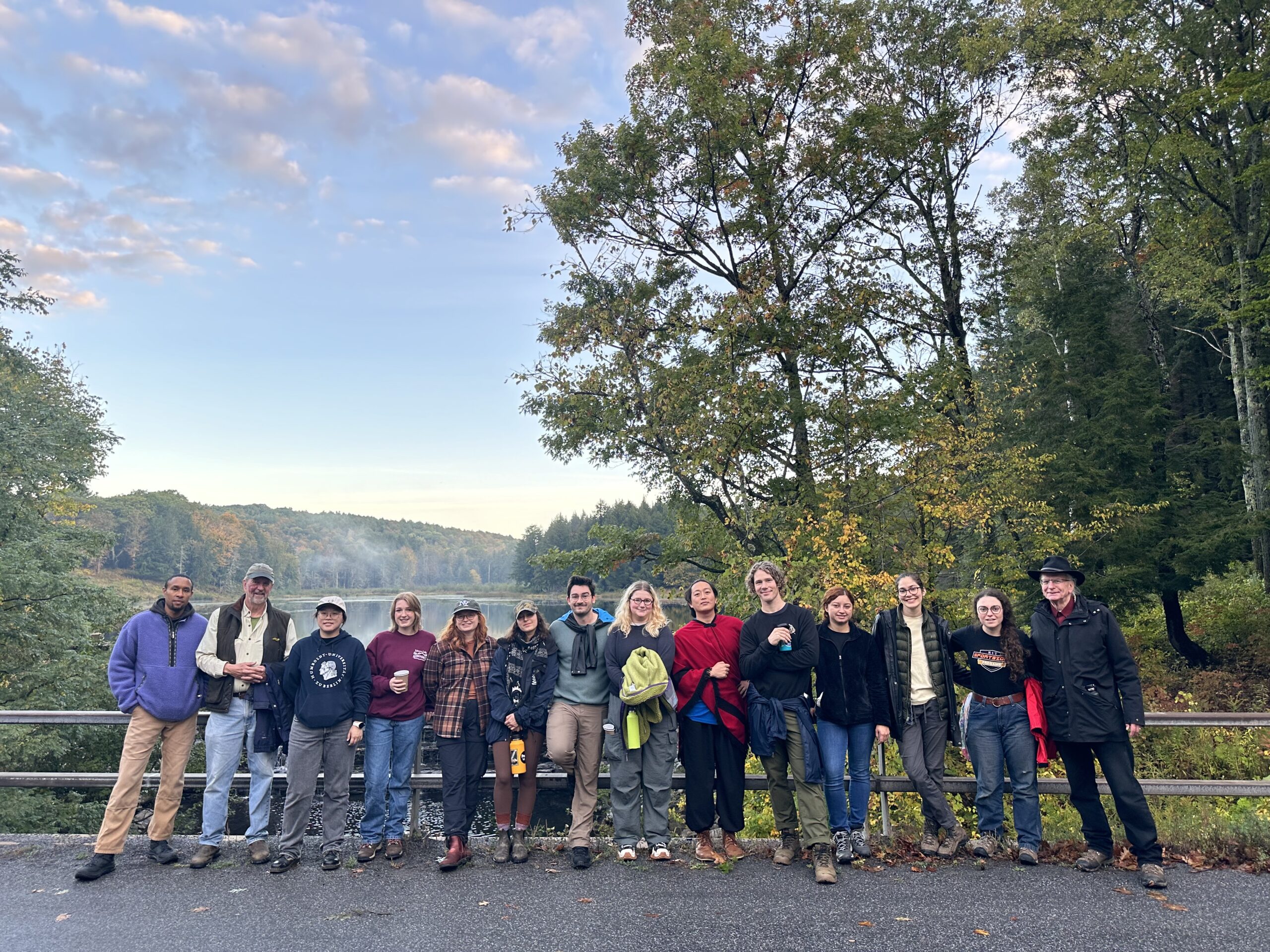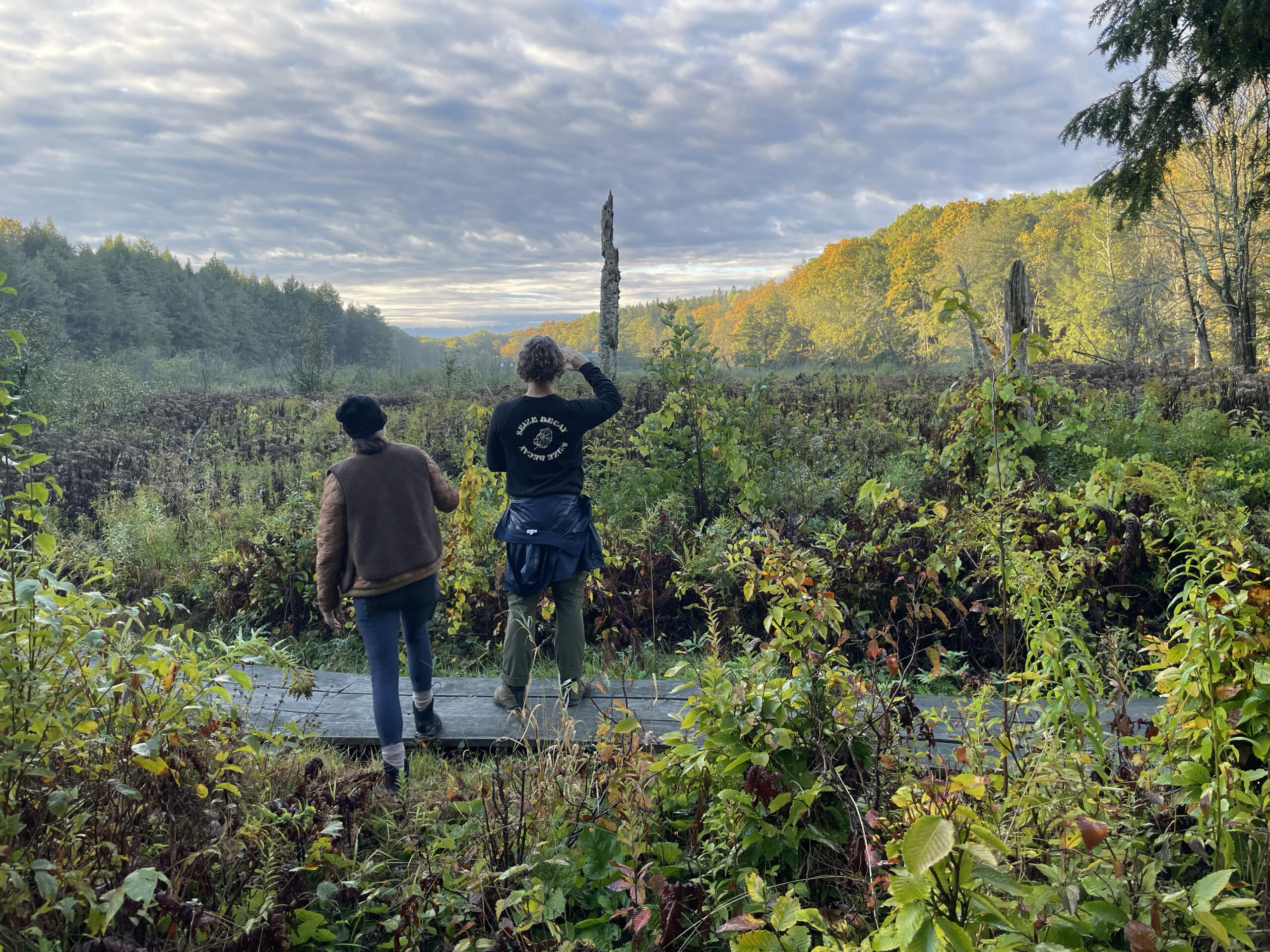Students and faculty in the Master of Landscape Architecture (MLA) program recently traveled upstate to the Catskills for an immersive five-day learning trip that included experiences for students from all three years of the program.
The inaugural “Field School,” designed by Program Director Rosetta S. Elkin, taught students how to engage with local environmental issues and learn about landscape history. They worked on skills such as plant identification, hydrological analysis, seed foraging, and habitat creation, and also discussed the complexities of ecological change, settler heritage, and the rich plant and animal life of the Catskills region. They learned how important this region was to creating Brooklyn, and why it continues to sustain life in the city.
“Land-based learning offers an indigenized and environmentally focused approach to education by recognizing the deep physical and mental connection to the land that is part of our culture,” said Elkin. “While studio-based courses are a pedagogically rich opportunity to engage with design, land-based learning enriches design projects by cultivating first-hand experience with the role of the landscape in human affairs. In a time of great disconnection from the living world around us, brought on by the sixth extinction and the inequitable effects of global climate change, it is insufficient to teach solely through abstractions. Rather, the challenges are all around us and are best addressed hands-on.”
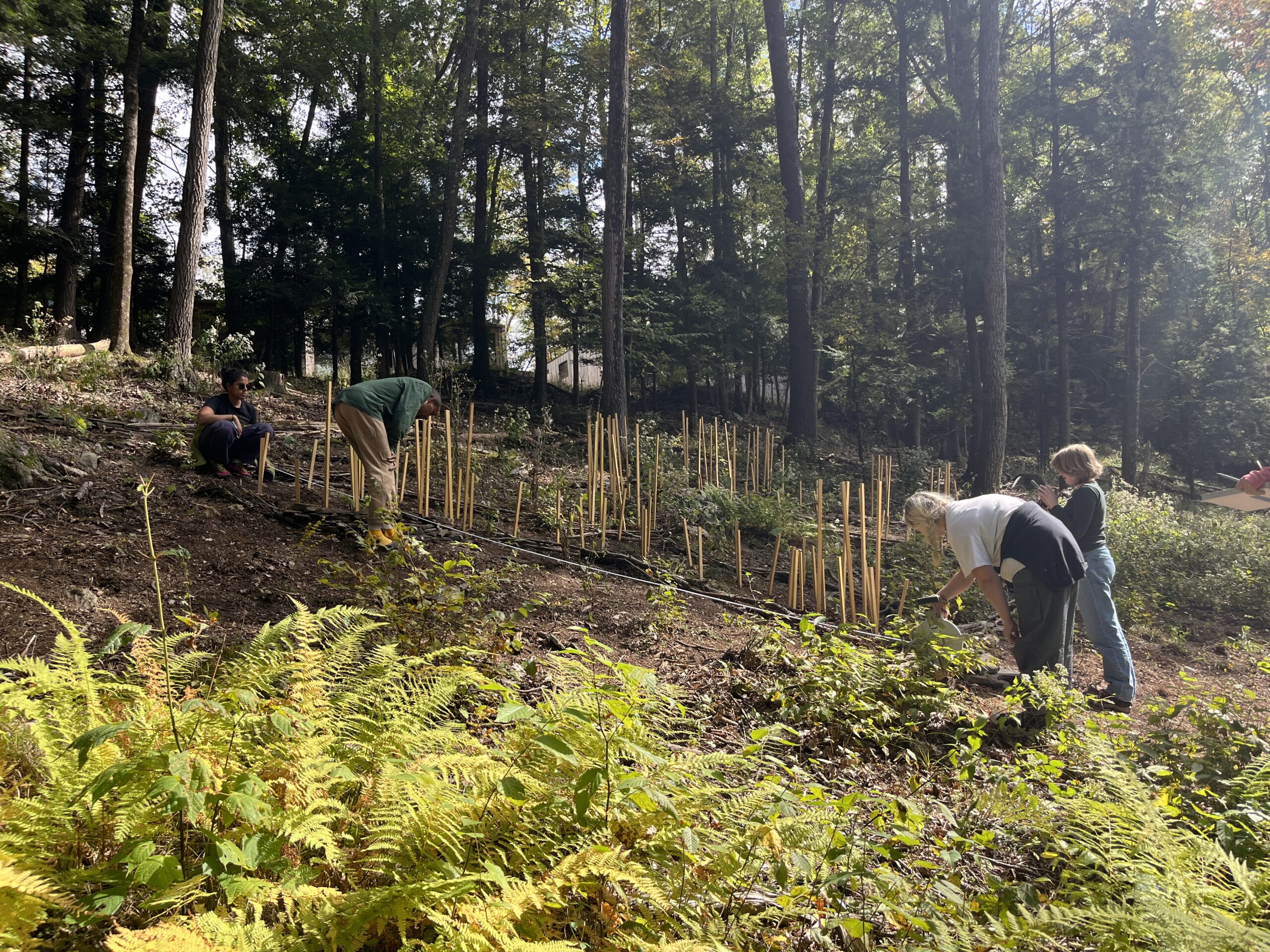
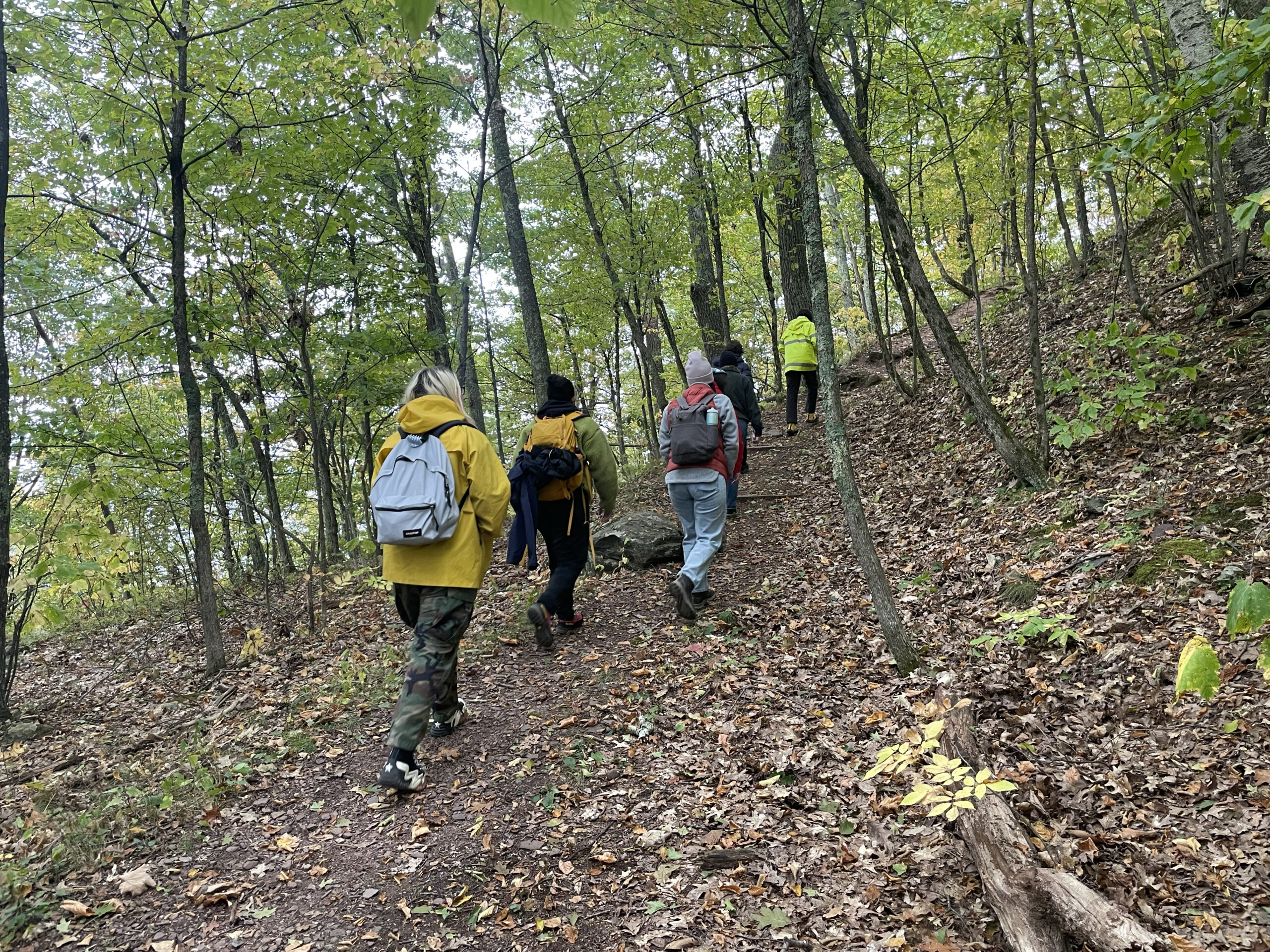
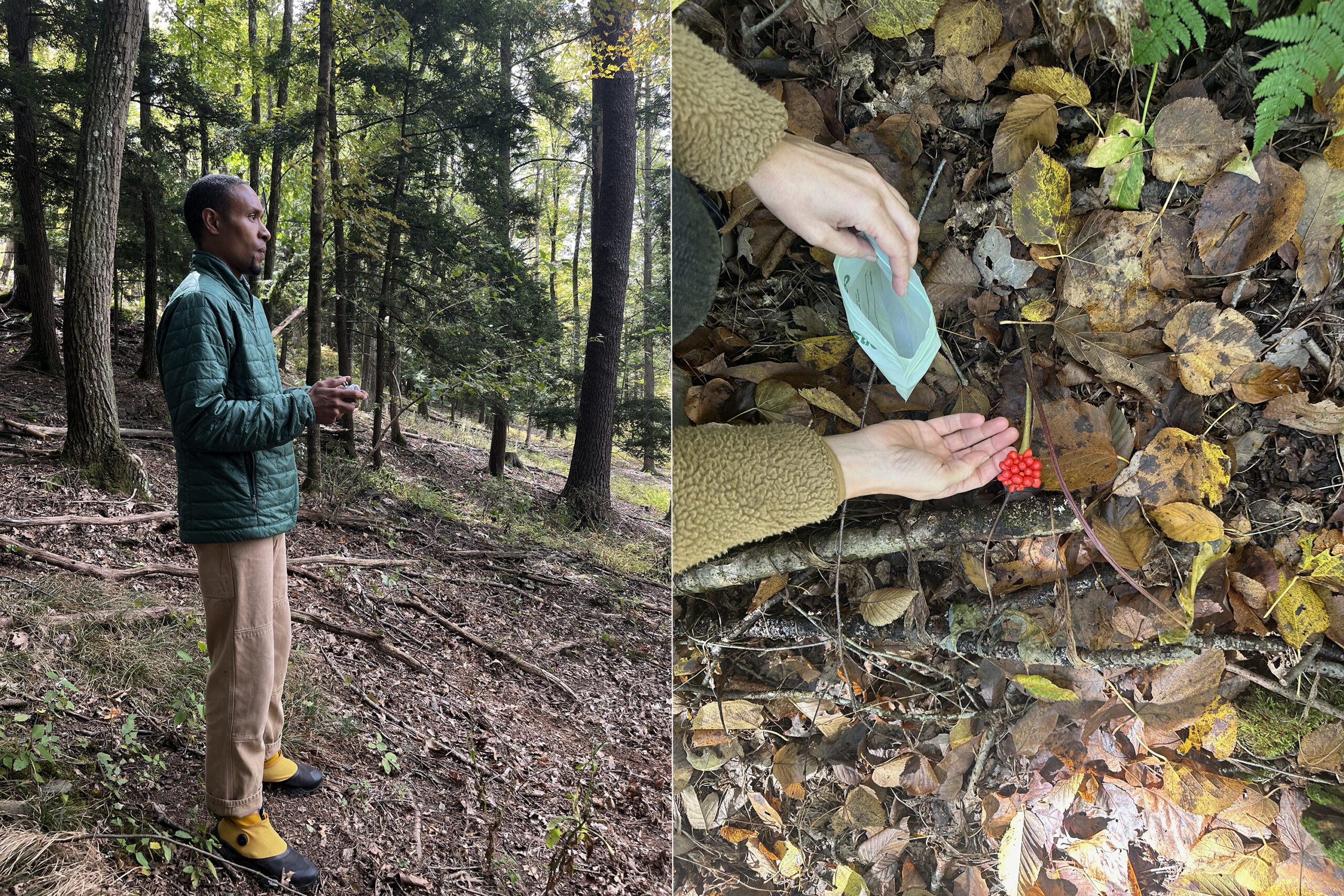
During the first part of Field School, first-year students studied the soil and plants of the lower Catskill valley, working with aerial cartography and drones to analyze deer overpopulation and spongy moth infestations, with guidance from Assistant Professor of Landscape Architecture Mark Heller and Visiting Professor of Landscape Architecture Bill Logan.
On the third day, the program expanded to include second- and third-year students, along with Assistant Professor of Landscape Architecture Mariel Collard and Professor of Landscape Architecture Jeffrey Hogrefe. Together, the cohort explored the Fossil Forest in Cairo in the mid elevations of the region, where there is a 385 million-year-old site normally closed to the public that provides a fascinating glimpse into Earth’s prehistoric climate history. Here, students learned how ancient plant life played a pivotal role in transforming the atmosphere, enabling the evolution of life as we know it.
“To witness and touch a preserved root system helps students learn that plants reveal a key milestone in Earth’s climate history, developing thick, long-lived, carbon-rich wooden roots that helped stabilize their photosynthetic parts—the stuff that pulled enough carbon out of the atmosphere to condition the planet so that humans and other creatures could evolve,” Elkin said.
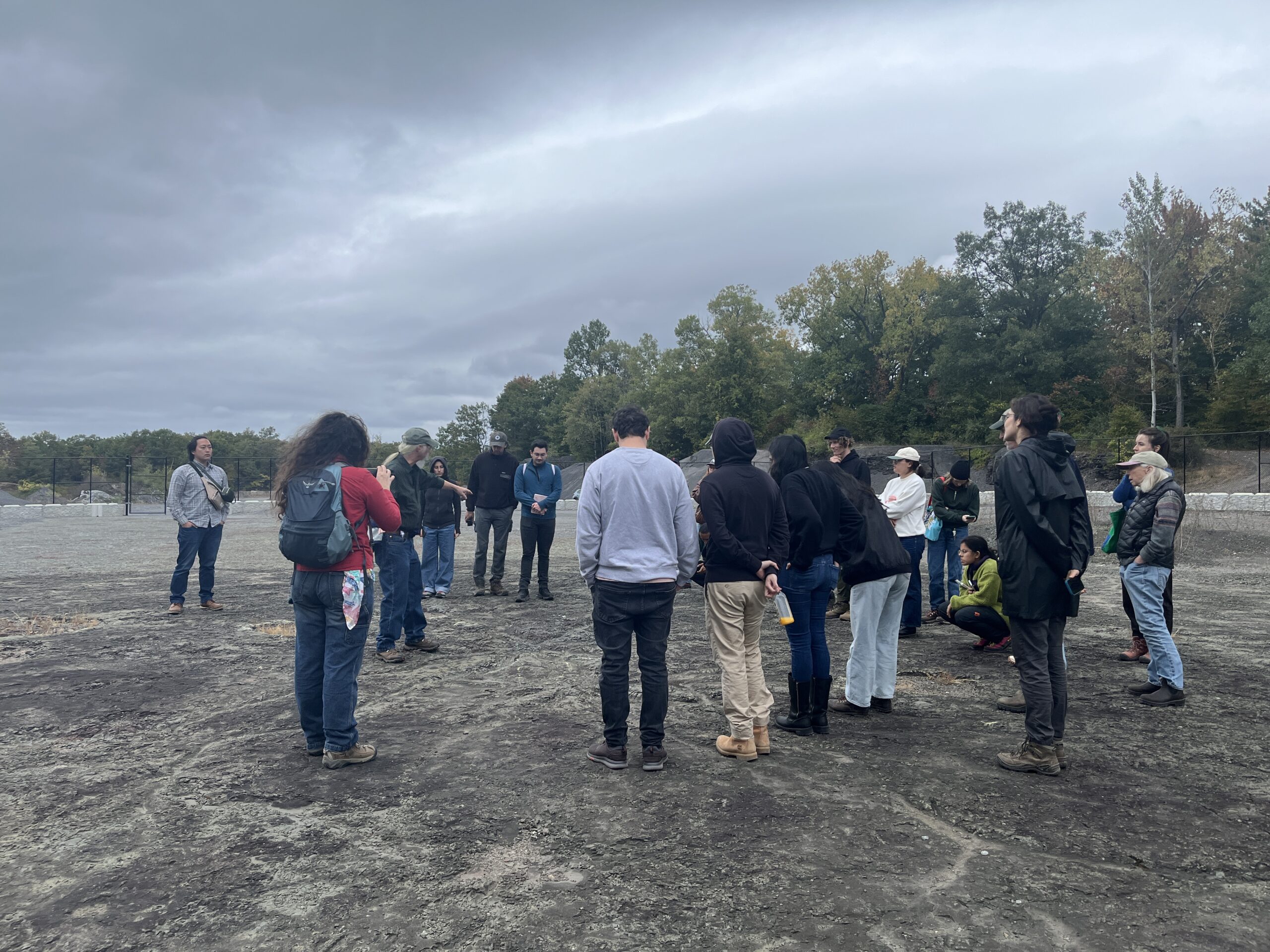
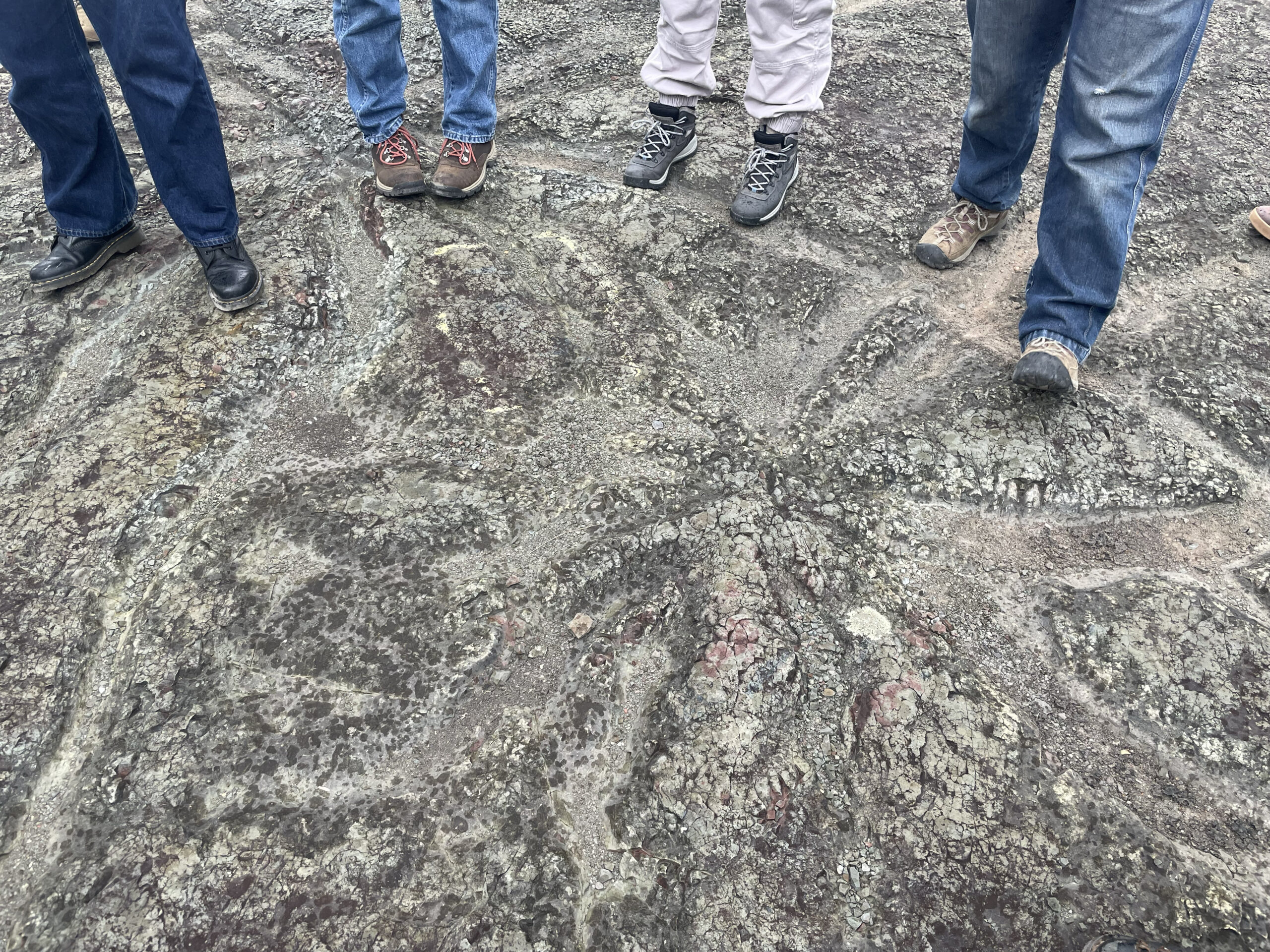
The journey continued to the high elevations of Huyck Preserve in Rensselaerville, where students and faculty explored the nature of old growth, successional, and planted forests that Logan has studied for over 25 years. Through a variety of interactive activities—such as guided walks, song, digging, and drawing—students engaged with the landscape’s ecological narrative, learning to “read” for clues in the present-day forest that reveal both the past and the potential future of the entire ecosystem. For instance, an early morning walk to a series of beaver dams offered a lesson on the role of other species in forest rejuvenation.
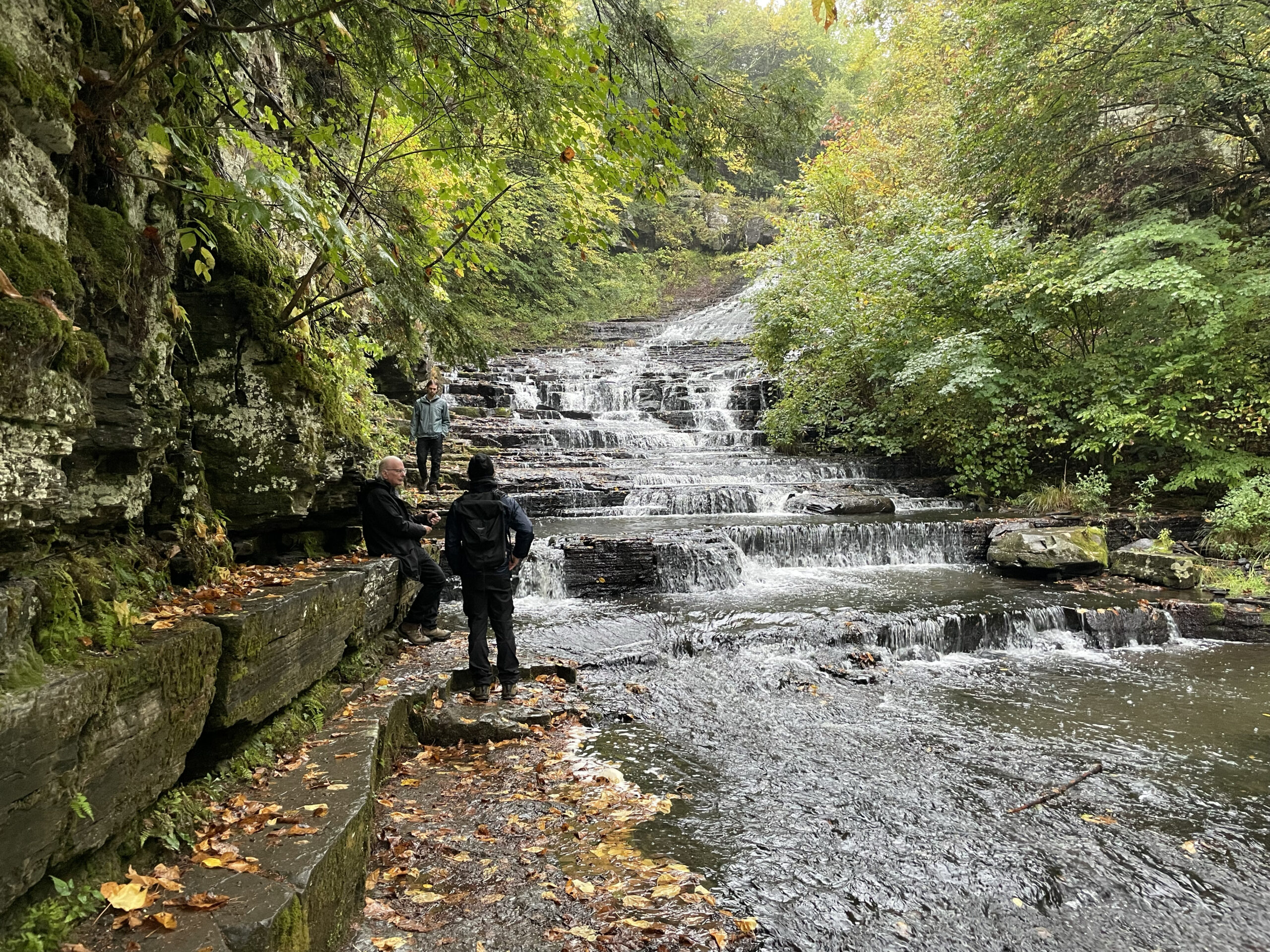
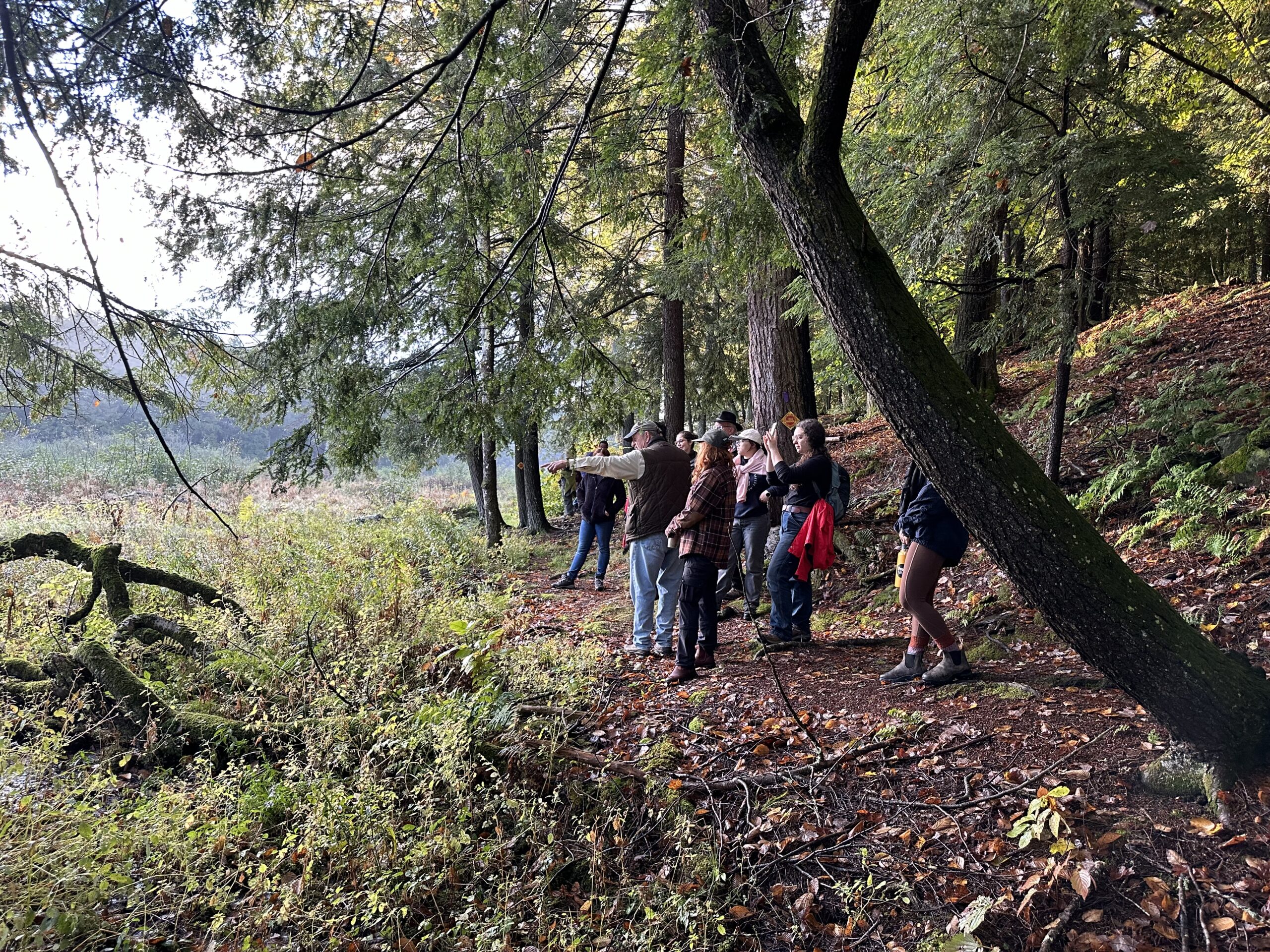
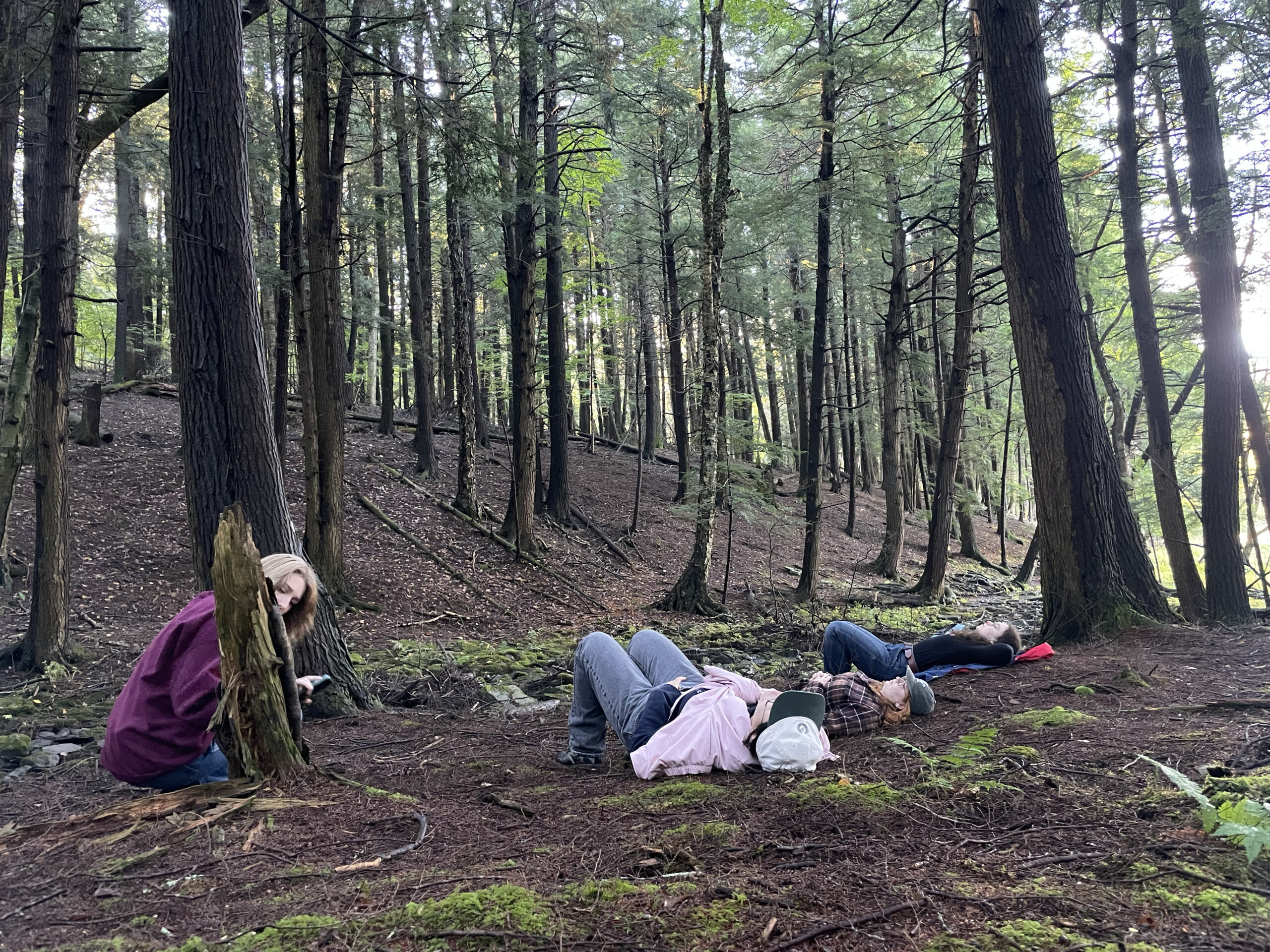
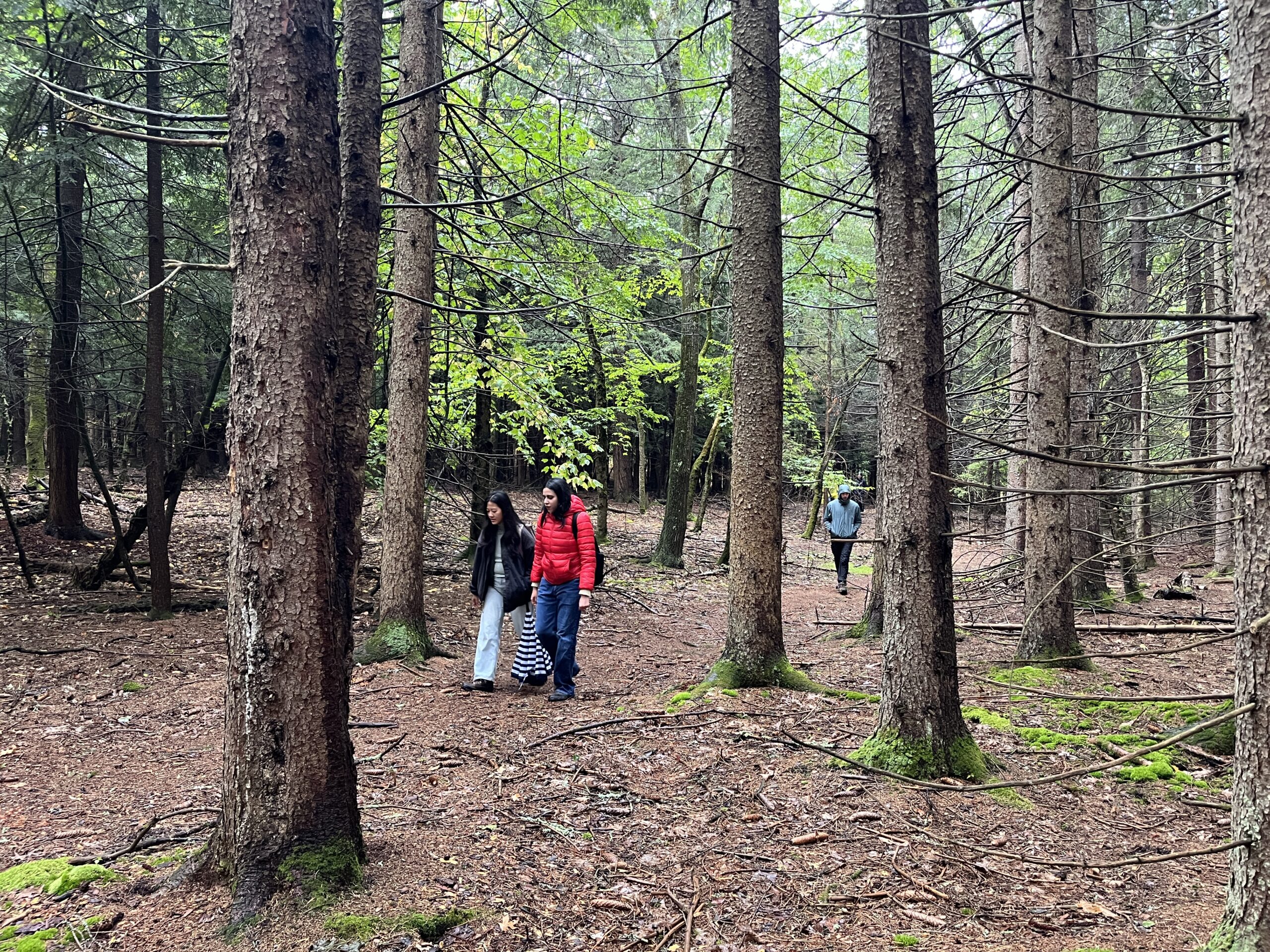
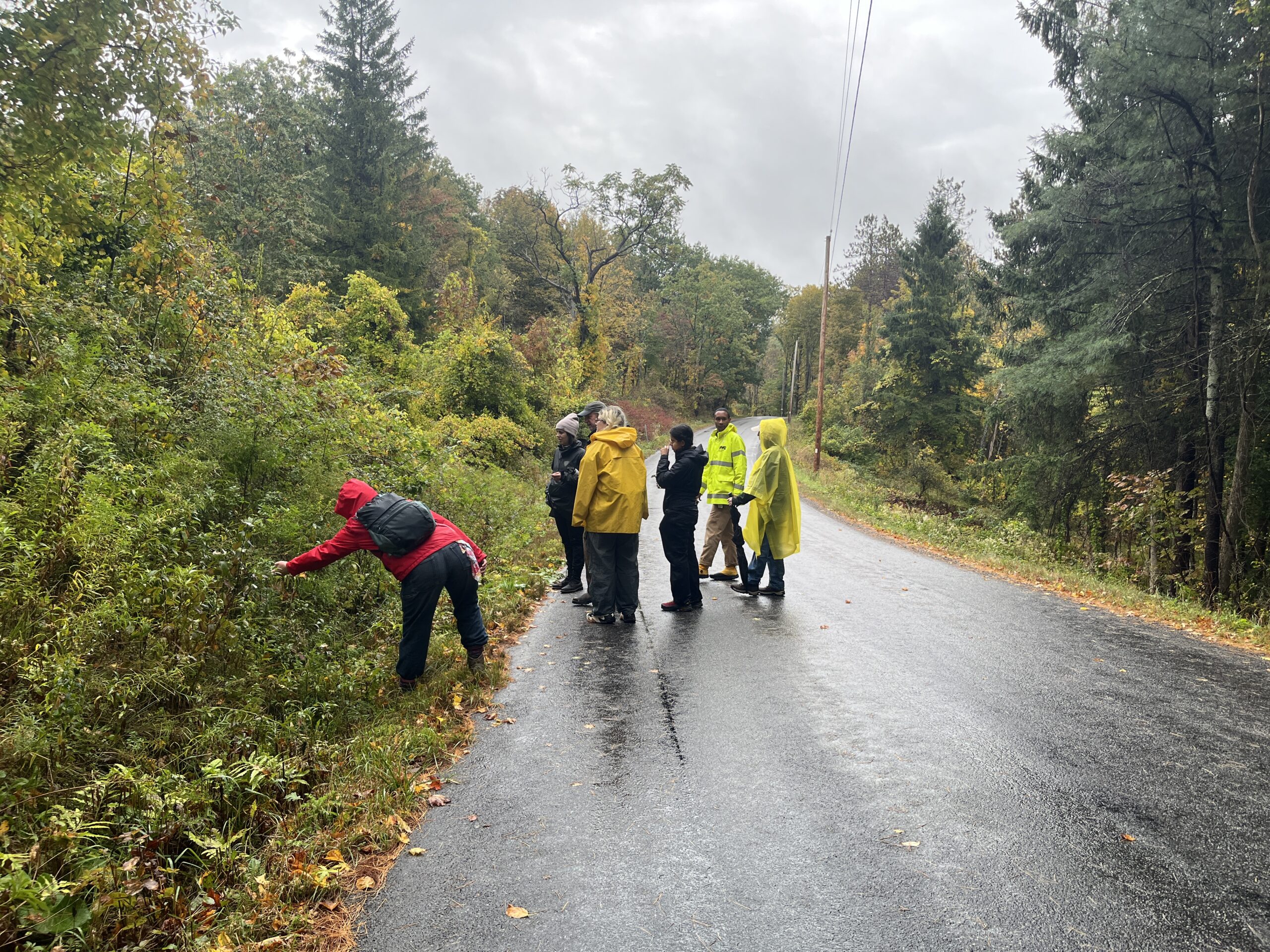
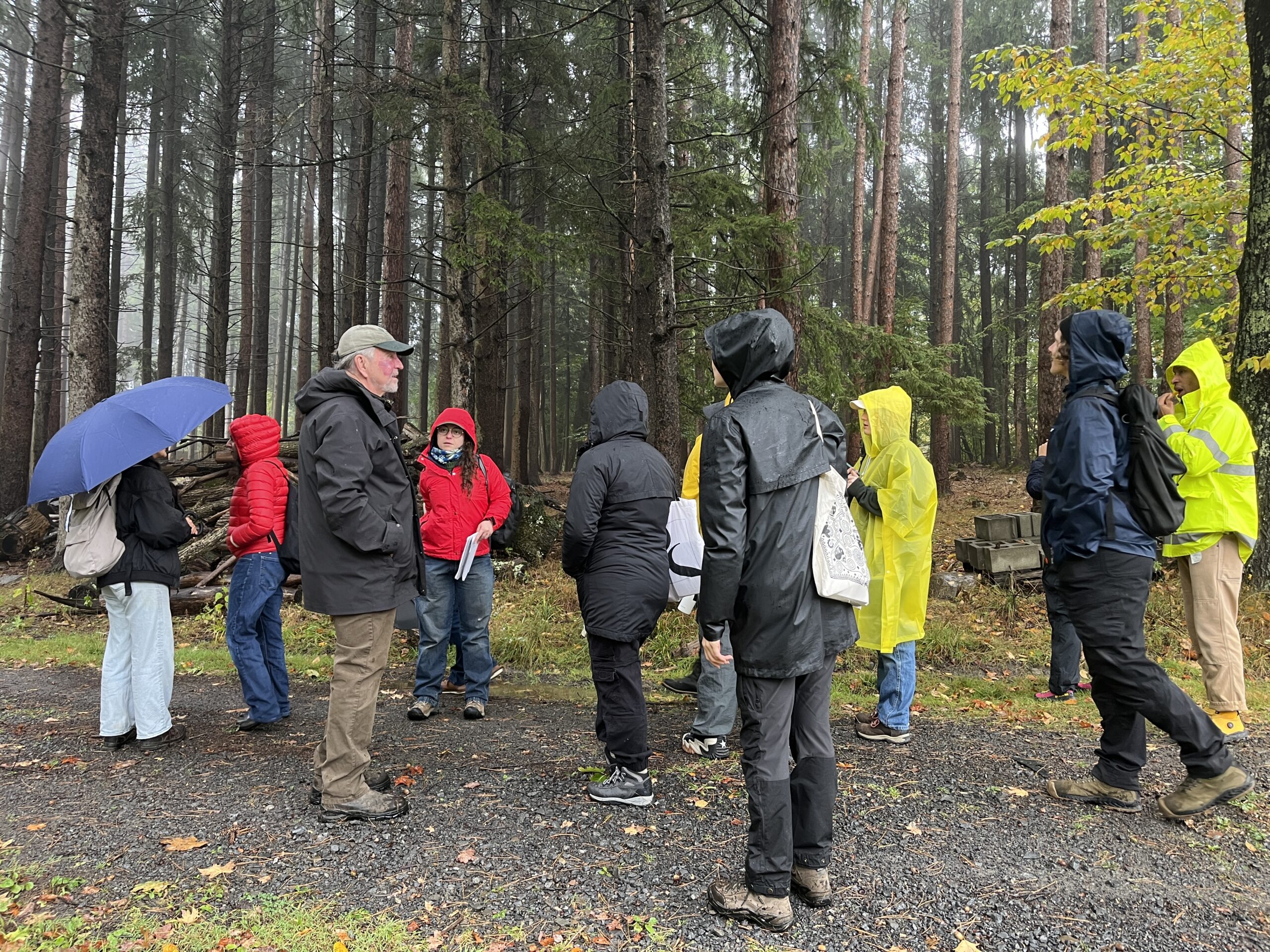
On the final day, students split into groups of three, with students from each year of the program, a kind of vertical integration that is rare in studio-based programs. Each group was assigned a series of land-based learning instructions to help engage with the land. The results were formatted into short films and presented to the group for discussion.
Field School not only provides practical, boots-on learning but also fosters a sense of community. Students cook and eat together, meditate in the woods, dig for mushrooms, and share long walks, all while reflecting on their role as future landscape architects who will navigate and work with the rapidly changing natural world during their careers.
